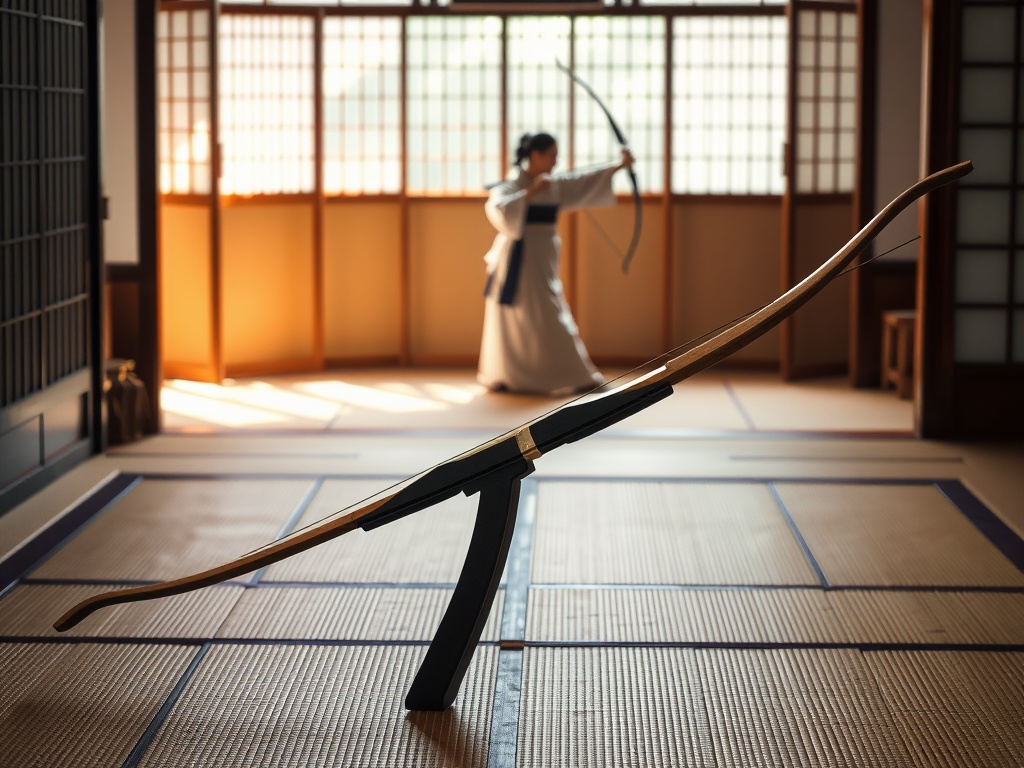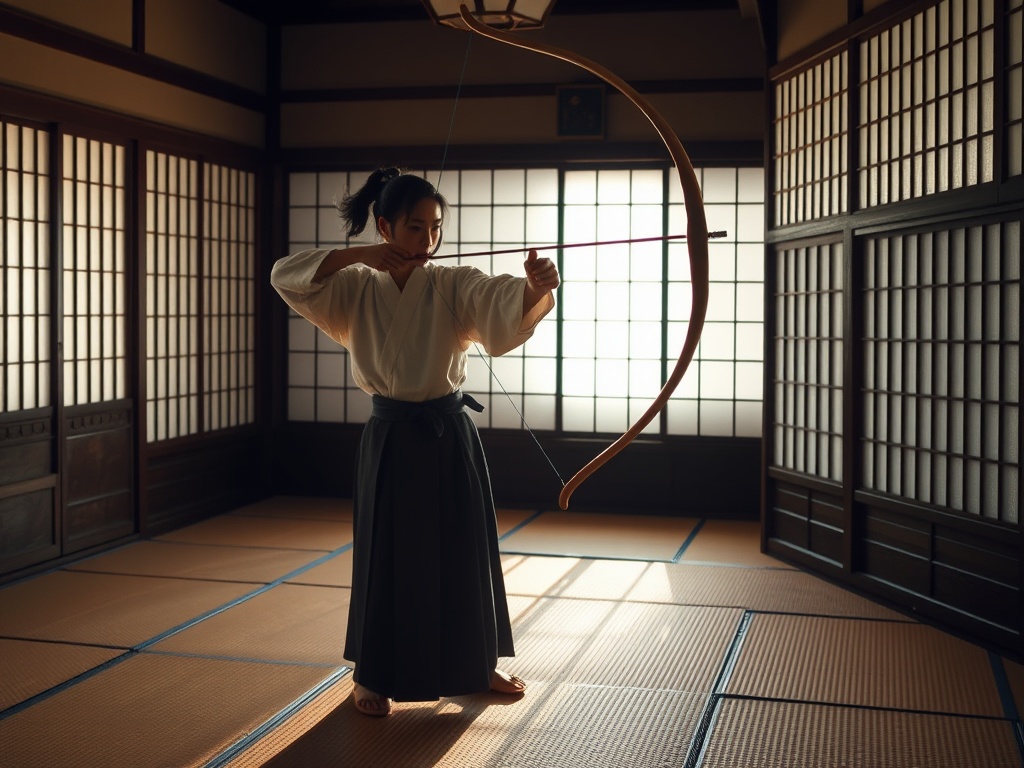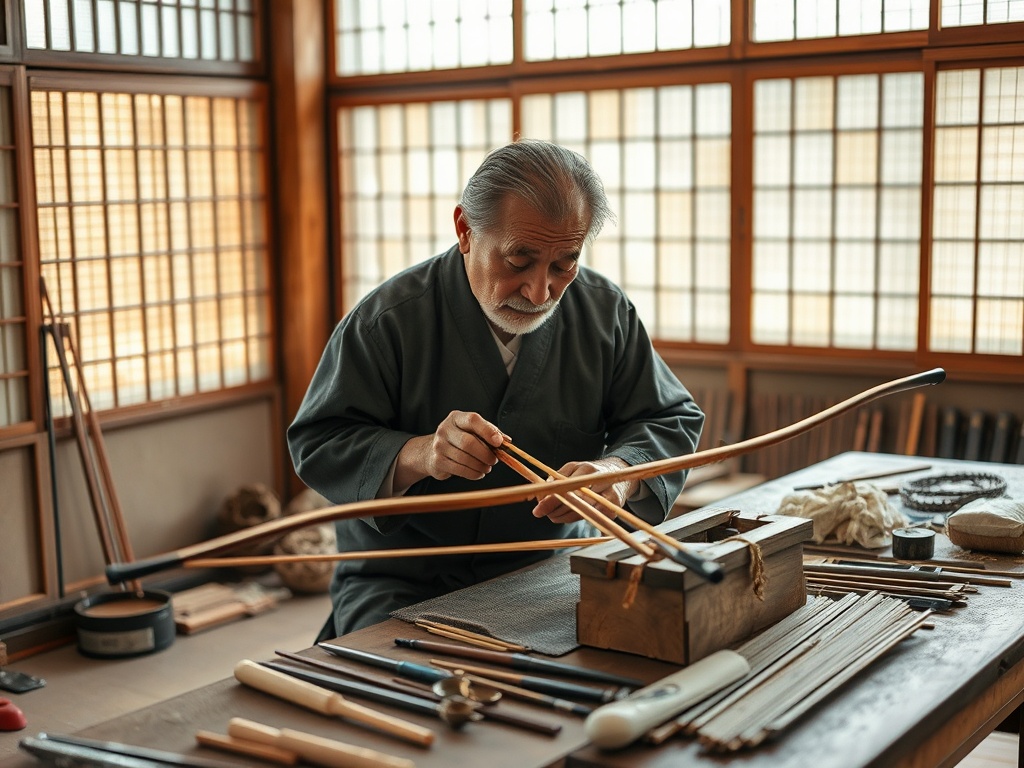Unveiling the Mystique of the Yumi: Japan’s Timeless Bow
Win a Free Trip to Japan!
Experience cherry blossoms and ancient temples
The Yumi, a symbol of Japanese tradition and skill, stands as an exquisite testament to the country’s rich cultural tapestry. With its elegant curvature and storied past, the Yumi isn’t just a bow; it is an emblem of Japan’s timeless artistry and precision. For travel and tourism enthusiasts, the Yumi offers a window into the ancient techniques and philosophies that have been meticulously preserved through generations.
Each Yumi is a masterpiece, crafted with precision and patience. Unlike Western bows, the Yumi is asymmetrical, yet this unique design is integral to its function and charm. Constructed primarily from bamboo and wood, the process of making a Yumi is an art form in itself, often taking years to perfect. This intricate craftsmanship reflects the harmonious blend of strength and flexibility, allowing the bow to perform with remarkable efficiency. Visiting a traditional workshop offers an unforgettable glimpse into this ancient craft, where artisans dedicate their lives to mastering the bow’s creation.
For those eager to step into the shoes of a samurai, participating in a Yumi archery session is a must. The practice of Kyudo, or ‘the way of the bow’, is steeped in ritual and discipline, offering a profound experience for enthusiasts of Japanese culture. This is not merely about hitting a target; it’s a meditative journey that emphasizes form, focus, and fluidity. Many cultural centers across Japan offer sessions where travelers can learn the basics of Kyudo, providing a unique opportunity to connect with Japan’s martial heritage.
Essential Elements of a Yumi Archery Experience:
- Understanding the Asymmetrical Design
- Mastering the Art of the Draw
- Experiencing the Rituals of Kyudo
The Art of Crafting Yumi: A Journey Through Tradition and Skill
The crafting of a Yumi is not merely an exercise in woodworking; it is an intricate dance between art and engineering, deeply rooted in Japanese tradition. For those passionate about travel and history, understanding the creation of a Yumi offers a captivating peek into Japan’s cultural heritage. Visitors to Japan have the unique opportunity to witness this time-honored craft, where the skills and techniques have been lovingly passed down through generations, ensuring the preservation of its enigmatic allure.
In the heart of this craft lies an exquisite blend of materials. The Yumi is primarily constructed from a combination of bamboo and wood, each selected for its unique properties. Bamboo, revered for its flexibility and strength, forms the core of the bow, while hardwoods are often employed for the grip, adding both durability and balance. The artisans employ traditional techniques, honed over centuries, to shape, bend, and bind these materials into the Yumi’s distinctive form. The process is a testament to the harmony between nature and craftsmanship, resulting in a bow that is both functional and aesthetically pleasing.
Visiting a traditional Yumi workshop is more than just observing a craft; it is an immersive experience into the heart of Japanese culture. Artisans dedicate their lives to mastering the delicate art of Yumi-making, each bow a labor of love that can take months, if not years, to perfect. Tourists are often welcomed to watch these masters at work, offering a rare glimpse into a world where patience and precision are paramount. This cultural journey not only enhances one’s appreciation for the bow itself but also deepens the understanding of the cultural significance behind its creation.
For travel and tourism enthusiasts, the Yumi is more than a mere artifact; it is a gateway into the soul of Japan, where tradition, skill, and artistry converge in a timeless symphony.
From Samurai to Olympians: The Yumi’s Evolution Through Time
The Yumi, a symbol of Japan’s enduring legacy, has gracefully traversed centuries, evolving from its ancient origins with the samurai to its modern presence in competitive sports. This iconic bow embodies Japan’s rich history and cultural evolution, offering a captivating narrative for travel and tourism enthusiasts eager to explore the intersection of tradition and innovation. The journey of the Yumi reveals its adaptability and cultural significance, marking its transition from a weapon of war to a symbol of peace and discipline.
Originally wielded by the samurai, the Yumi was an essential tool in warfare, revered for its range and precision. It played a crucial role in battles, symbolizing the warrior’s honor and skill. As Japan transitioned from feudal conflicts to a more peaceful society, the Yumi’s role shifted significantly. Today, it is celebrated in the practice of Kyudo, a martial art focused on discipline and spiritual development rather than combat. This transition underscores the Yumi’s versatility and the cultural shift towards preserving heritage through peaceful practices.
The Yumi’s inclusion in modern sporting events marks a fascinating chapter in its evolution. While it retains its traditional form, its application in contemporary archery competitions highlights its enduring appeal. The precision and skill required to master the Yumi attract archers from around the world, blending the ancient art of Kyudo with modern athleticism. This fusion of tradition and competitive spirit offers a unique spectacle, drawing visitors eager to witness the elegance and discipline of Yumi archery on the global stage.
- Notable Features of the Yumi’s Evolution:
- Historical Significance: Transition from a samurai weapon to a symbol of peace and discipline in Kyudo.
- Cultural Integration: The Yumi’s presence in modern sports demonstrates its adaptability and continued relevance.
- Global Appeal: Attracts international attention, blending traditional Japanese culture with contemporary sporting events.
Experiencing Yumi Archery: A Cultural Adventure in Japan
For travelers with a passion for cultural exploration, Yumi archery offers an experience that is both immersive and enlightening. Stepping into the world of Kyudo—the ‘way of the bow’—is akin to embarking on a journey through Japan’s historical and spiritual landscape. This ancient practice, rooted in the discipline and precision of the samurai, invites participants to engage with Japan’s cultural heritage in a deeply personal way.
As you embrace the rituals of Kyudo, you will discover that each aspect of Yumi archery is steeped in symbolism and intent. From the moment you hold the bow to the graceful release of the arrow, every motion is a testament to centuries-old traditions. The emphasis on form and focus transforms this practice into a meditative art, where the external act of shooting becomes a reflection of inner balance and harmony.
In the serene environment of a Kyudo dojo, or training hall, visitors can witness firsthand the dedication and discipline that define this art form. The atmosphere is one of reverence and respect, inviting onlookers to appreciate the spiritual essence of Yumi archery. For those eager to participate, many dojos offer introductory sessions where you can learn the fundamental techniques under the guidance of experienced instructors.
These sessions provide a unique opportunity to connect with the spirit of the samurai, experiencing a sense of unity with a tradition that transcends time. As you draw the bowstring and feel the strength of the Yumi come alive, you become part of a lineage that has shaped Japan’s cultural identity. The experience is not just about mastering a skill, but about finding a deeper understanding of oneself through the art of the bow.
The Spiritual Connection: Yumi Bow in Japanese Rituals
The Yumi, far beyond its physical artistry, holds a profound spiritual essence that resonates deeply within Japanese rituals. This iconic bow, revered for its elegance and precision, is not merely an instrument of archery but a conduit for spiritual expression. For travel and tourism enthusiasts, delving into the spiritual dimensions of the Yumi unveils a captivating facet of Japan’s cultural heritage that intertwines history, philosophy, and spirituality.
In the context of Japanese rituals, the Yumi is a sacred symbol representing harmony and balance. Its asymmetrical form is not just a design choice but a reflection of the cosmic balance found in nature. This spiritual symbolism is especially evident during traditional ceremonies where the bow is used as a tool for meditation and reflection. The act of drawing and releasing the arrow is likened to the spiritual journey of life, emphasizing the importance of balance and mindfulness in one’s actions. Tourists visiting Japan can witness these rituals in temples and cultural festivals, where the Yumi is central to expressing these timeless values.
Kyudo, often described as the ‘Zen archery’, is an art form that transcends mere physical skill. It is deeply rooted in the spiritual pursuit of self-discovery and enlightenment. Practitioners of Kyudo engage in a disciplined practice that merges the physical act of archery with an inner quest for peace and self-awareness. For visitors, participating in a Kyudo session offers a unique opportunity to experience this spiritual journey firsthand. Guided by experienced instructors, travelers can explore the meditative aspects of Kyudo, where the Yumi becomes an extension of the soul, guiding one towards inner harmony.
- Ritualistic Practices: The Yumi is often incorporated into Shinto rituals, symbolizing purification and protection.
- Symbol of Spiritual Growth: The bow’s use in Kyudo reflects the spiritual growth and discipline of the practitioner.
- Cultural Ceremonies: Witness traditional ceremonies where the Yumi plays a pivotal role in connecting the physical and spiritual realms.
Yumi and Beyond: Exploring Japan’s Unique Archery Techniques
For those captivated by Japan’s rich cultural tapestry, the world of Yumi archery offers a fascinating glimpse into the nation’s diverse array of traditional techniques. While the Yumi is often celebrated for its distinctive asymmetrical design, its significance extends far beyond its physical form. The Japanese archery tradition encompasses a variety of styles and practices, each with its own unique characteristics and philosophies. Exploring these diverse approaches provides a deeper understanding of how archery has become an integral part of Japan’s cultural identity.
One of the most intriguing aspects of Japanese archery is the way different regions and schools have developed their own unique methods. For instance, the Ogasawara-ryu, one of the oldest schools, emphasizes ceremonial and ritualistic techniques that are closely tied to Japan’s spiritual heritage. This style is often characterized by its elegant and structured movements, which are designed to reflect the harmony and balance found in nature. Travelers visiting Japan can witness these graceful techniques at festivals and demonstrations, where the artistry of Ogasawara-ryu is showcased in its full splendor.
The evolution of Yumi archery has been significantly influenced by Japan’s historical landscape. As the country transitioned from the era of samurai warfare to a period of peace, the focus of archery shifted from combat to spiritual and recreational practices. This change is reflected in the development of modern styles like Kyudo, which blends physical discipline with a meditative approach. For those seeking to delve into the historical roots of Japanese archery, exploring these modern techniques reveals the enduring legacy of the samurai while offering a new perspective on the role of archery in contemporary Japanese society.
Visitors to Japan can immerse themselves in this historical journey by participating in Kyudo workshops, where they will learn how the traditional principles of self-discipline and inner focus have been adapted to suit modern sensibilities. These experiences not only highlight the continuity of tradition but also demonstrate how Japanese archery has evolved to maintain its relevance in today’s world, offering a unique blend of the past and present.


